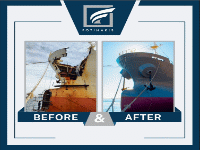Transforming Supply Chains: 8 Strategic Steps to Proactive Preparedness
Supply chain executives are eager to plan for the future, yet many find themselves constantly extinguishing fires. this insight comes from PwC’s 2025 Digital Trends in Operations Survey, which gathered feedback from 610 leaders in operations and supply chain management. The findings reveal a struggle to transition from immediate fixes to enduring strategies.
According to the report, “Operations teams face significant hurdles—escalating costs, new tariffs, and disruptions—while also being tasked with future planning.” it emphasizes that it’s not merely about identifying necessary changes; it’s about how quickly these leaders can implement them.
Here are some eye-opening statistics:
- A whopping 91% of respondents anticipate major shifts in their supply chain strategies due to U.S. trade policies.
- over half (57%) have already integrated AI into certain business functions.
- However, an overwhelming 92% feel their technology investments haven’t yielded expected returns.
Balancing Immediate Needs with Future Goals
One of the biggest challenges is striking a balance between urgent demands and long-term objectives. A staggering 82% of participants reported difficulties managing short-term pressures alongside strategic planning.With nearly 90% expecting supplier and material costs to surge in the coming year, this adds even more strain on budgets.
The report highlights that “Geopolitical uncertainties and changes in trade policy compel leaders to create more adaptable operations.” This necessitates improved scenario planning,quicker decision-making processes,and agile supply chains capable of real-time adjustments.
AI: Potential vs. Reality
While AI is gaining momentum within organizations, it’s full potential remains largely untapped. Just over half of those surveyed utilize AI for managing disruptions within their supply chains; another third are experimenting with it.
AI applications include demand forecasting, procurement processes, and shipment tracking—all aimed at identifying issues sooner and minimizing delays. Yet scaling these technologies presents challenges: 42% cited integration hurdles while 37% pointed out data-related problems such as poor quality or limited access. Even with advanced tools like AI at their disposal, many leaders feel that returns have not met expectations.
It’s About Submission More Than Tools
emerging technologies like digital twins show promise but aren’t widely embraced yet; only about one-fifth of companies use them despite high effectiveness ratings among users (97%). The primary obstacle? Integration issues abound—“You can’t simply purchase technology without a strategy,” states the report. Companies must develop systems that communicate effectively with one another rather than just accumulating tools without purpose.
Hiring Isn’t Everything
While hiring skilled talent is crucial for fostering a digitally adept workforce, it’s not the sole solution available. Innovative approaches such as offering certifications or acquiring tech-savvy firms have proven effective too.
The report encourages businesses to think beyond conventional hiring practices: “training alone isn’t sufficient,” it notes. “To stay competitive requires fresh thinking.”
Actionable Steps for Companies Today
To help organizations move forward efficiently and intelligently, here are eight actionable recommendations:
- Commit fully to digital initiatives by aligning resources with key objectives.
- prepare for disruptions using predictive analytics combined with flexible operational models.
- Treat data as an essential asset by enhancing its quality and accessibility.
- Focus on tangible ROI from digital investments by linking performance metrics directly tied to tech usage.
- Prioritize integration over mere implementation; streamline systems for genuine value creation.
- Make AI relevant across all departments by expanding prosperous use cases throughout operations.
- Cultivate robust ecosystems through strengthened partnerships along the value chain.
- Foster a culture of continuous learning were roles evolve alongside technological advancements.
“it’s still possible to get ahead,” concludes the report—but proactive measures are essential!
Content Original Link:
" target="_blank">



















































